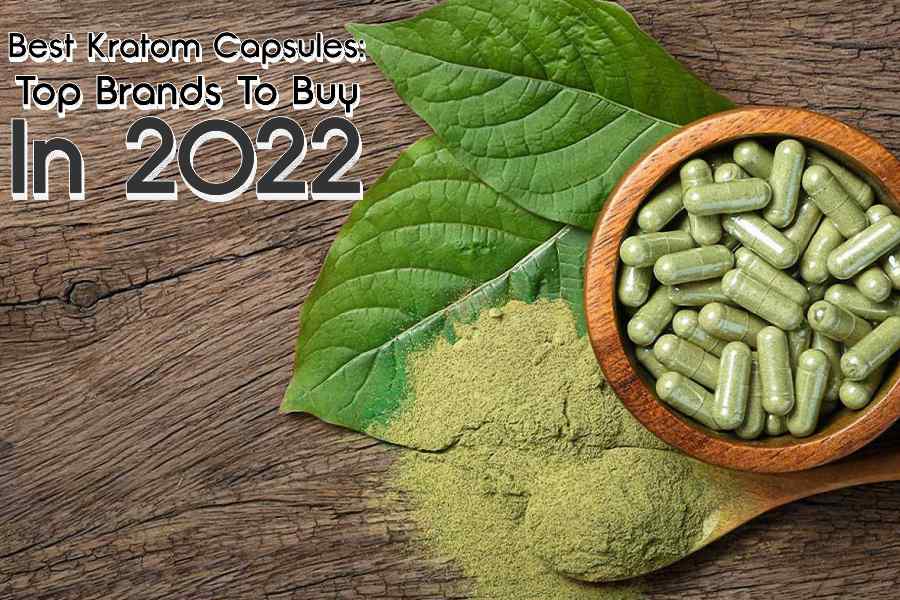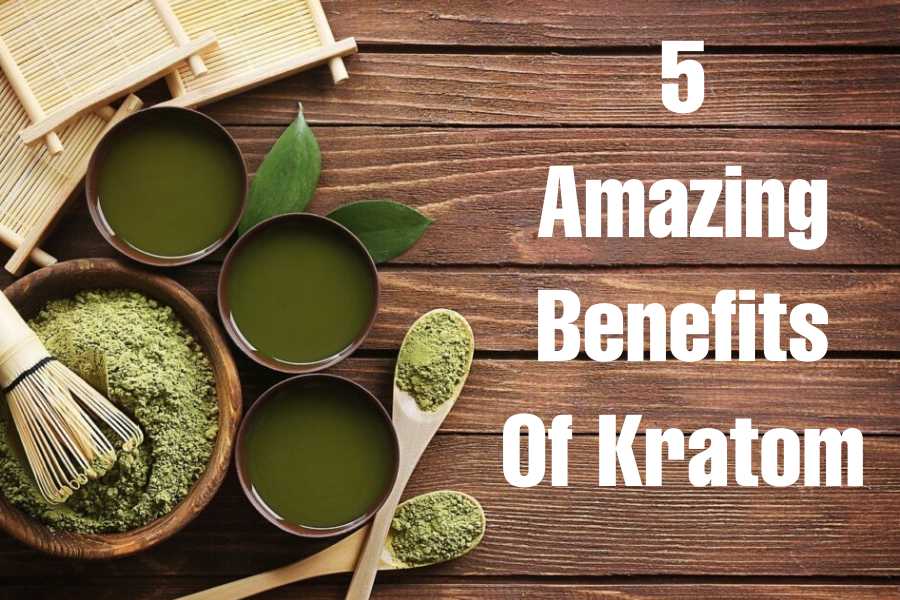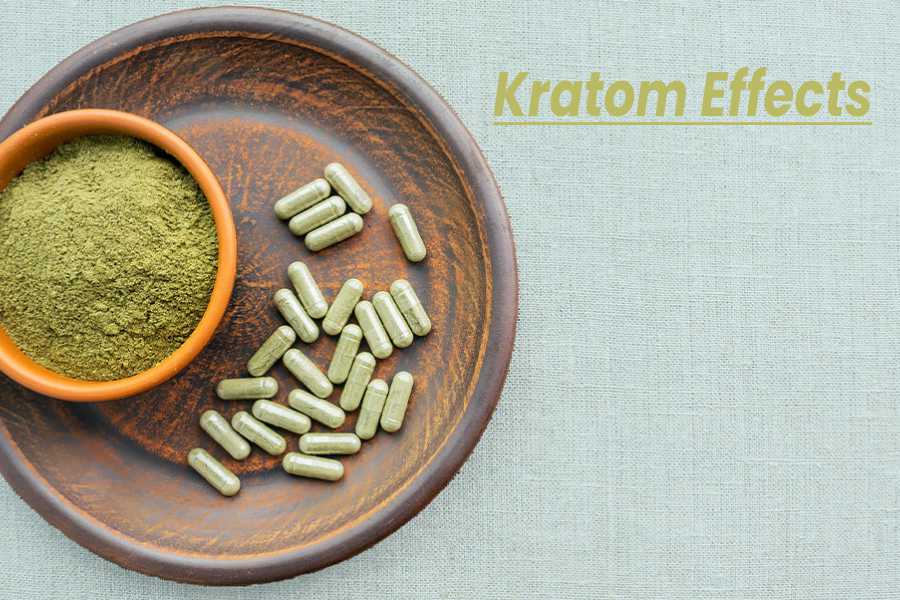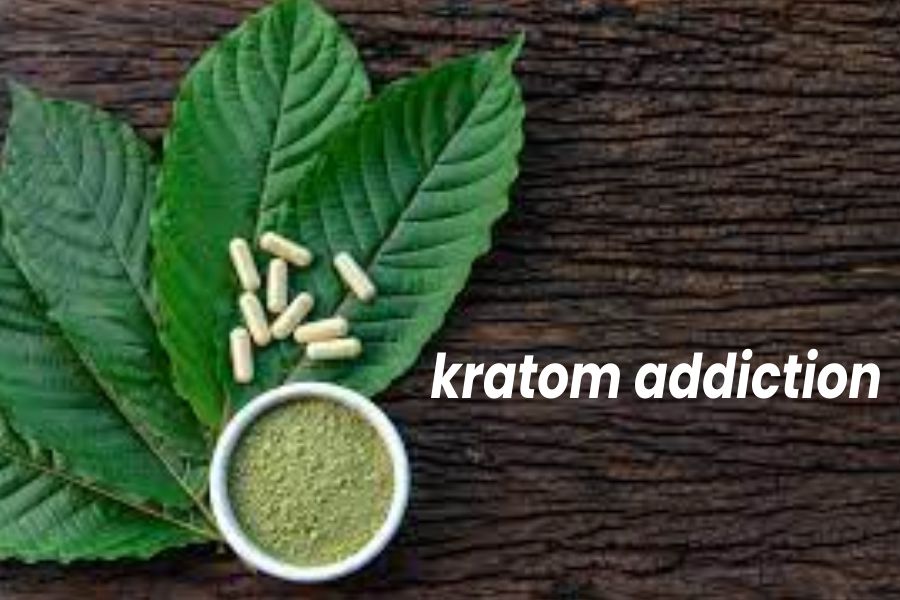
What is kratom?
Kratom (Mitragyna speciosa) is a Southeast Asian tree. The leaves contain a chemical called mitragynine, which acts similarly to opioids like morphine.
People commonly use kratom to treat withdrawal symptoms from heroin, morphine, and other opioid drugs, as well as cough, depression, anxiety, and a variety of other conditions, but there is no good scientific evidence to back up these claims. Using kratom can also be dangerous.
Due to serious safety concerns, kratom is prohibite in some states and countries. The US Food and Drug Administration has advised consumers to avoid using kratom-containing products.
Kratom: Overview
There is a scarcity of scientific data on the effects of kratom, and no controll clinical trials have been conduct to determine whether it is safe for human consumption.
The majority of our current knowledge about this drug is based on anecdotal reports from users and doctors, as well as animal experiments.
Kratom is not a controlled substance in the United States, and it is available in a variety of forms on the Internet and in head shops, including:
- Loose chopped leaves (to make tea).
- Capsules.
- Compressed tablets.
More than 20 biologically active chemicals have been discover in the drug, including several that bind opioid receptors in the human brain and have the potential to lead to physical dependence and addiction.
Although the plant has a long history of use as a herbal medicine in Southeast Asia, kratom abuse is also common–the drug is illegal in Thailand, Malaysia, and Myanmar due to its addictive potential.
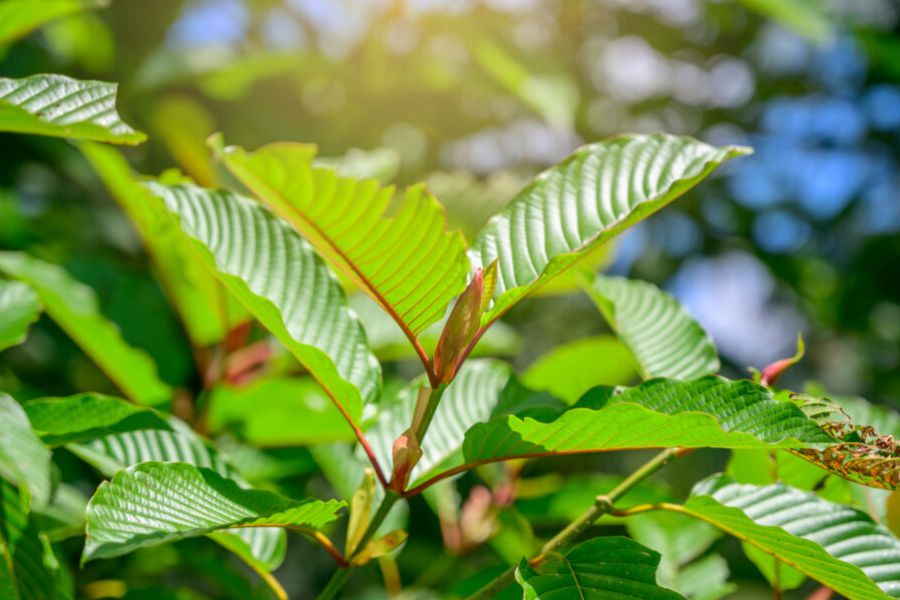
Why do people use kratom?
Because kratom interacts with the opioid receptors in the brain, some people use it to relieve pain or overcome opioid addiction.
Because medical communities are now attempting to discourage the use of opioids for pain relief, many patients who previously relied on them are no longer able to do so.
In their search for alternatives, some people turn to kratom, which is a compelling substitute because it has similar pain-relieving effects.
People mistakenly believe that kratom is safe because it is “natural.” It’s also legal and widely available in many states, removing the stigma associated with narcotics.
This article rounds up the best kratom vendors of 2022 that offer top quality yet affordable products while ensuring award-winning customer service.
Health Benefits of Kratom: Benefits, risks, and more
Kratom is the name of a coffee-family tree native to Southeast Asia. It is grown in Thailand, Malaysia, and Indonesia under the name mitragyna speciosa.
Its dried leaves are use to make tea, or they are encapsulate and sold as a supplement. Kratom leaves can also be smoke in the same way that tobacco is.
Kratom has been use as a natural home remedy in Asia for hundreds of years. Several potential health benefits of kratom have been discover through research:
- Libido Enhancement: Boost Your Sex Drive
Kratom has been studied as a possible supplement for sexual enhancement. Researchers looked at several clinical studies and reported findings on kratom’s aphrodisiac effects. They came to the conclusion that kratom is a potent plant-base sexual enhancer.
- Pain Relief: Pain Control After Surgery
Kratom comes in three different strains, all of which are effective pain relievers. Pain relief is provided by white vein, green vein, and red vein varieties by attaching to opioid receptors. 7-hydroxy mitragynine, a kratom compound, is 13 times more potent than morphine.
- Mood-Boosting: Easy Way To Quickly Improve Your Mood
Kratom has a variety of mood-enhancing properties. According to reports, kratom is an effective treatment for opioid addiction. It has been shown to help with morphine and ethanol withdrawal symptoms.
Kratom Benefits: 5 Amazing Health Benefits Of Kratom That Make It Medically Safe
Kratom is also known as Mitragyna Speciosa. Mitragyna Speciosa is a plant born in Southeast Asia. For decades, it has carried medical implications in native countries.
Kratom’s true power lies in above 40 different alkaloids present in its leaves. These alkaloids deliver numerous health benefits.
Kratom has multiple health benefits for managing chronic pain and inflammation and boosting a general sense of well-being and health.
- Kratom is an excellent energy booster.
- It could lend a helping hand in managing depression.
- Kratom relieves pain and inflammation.
- Kratom could provide some relief from anxiety.
- It might help overcome certain addictions.
Best Kratom for Pain: Top Strains Reviews, Dosage, & Effects
Kratom is also known as Mitragyna speciosa. Its native range includes Southeast Asian countries such as Vietnam, Indonesia, Malaysia, and Thailand.
Overall, it functions similarly to opioids but isn’t as strongly linked to addiction. There is, however, no single type of kratom. Instead, this herbal remedy is available in a variety of strains, each of which has a distinct effect.
While all strains of kratom provide pain relief, some strains provide more pain relief than others. In comparison to green and white strains, red strains are the most potent and pain-relieving.
The following sections will concentrate on the red vein varieties of kratom.
How is kratom used?
Kratom is traditionally consume as a tea or by chewing its leaves.
Kratom is also available in resins, extracts, and tinctures. On the street, you can buy kratom in the form of pills, capsules, powders, or even drinks.
In Thailand, for example, you can purchase a concoction containing kratom leaves, cough syrup, cola, and ice.
Kratom Tea: Enjoy your Mitragyna speciosa
You can enjoy the benefits of Kratom Powder in a soft, tasty drink with this simple Kratom Tea recipe. It makes no difference whether the tea is hot or cold, such as iced tea;
the effect will not be diminish if you put your Kratom in a tea.
Benefits of Drinking Kratom Tea: Support For Relieving Opioid Dependence
Kratom Tea has slightly different effects than Kratom powder. In general, the Kratom Tea experience is more stimulating. Furthermore, the analgesic effects are slightly diminish.
Many people claim that drinking Kratom Tea enhances mood-enhancing and euphoric effects.
This is most likely due to fast absorption and digestion, particularly on an empty stomach.
Kratom Tea For Anxiety & Chronic Pain, Is It Safe?
Kratom tea is promote as a possible cure for anxiety, depression, and chronic pain.
It’s made by brewing the kratom tree’s leaves or mixing kratom leaf powder into boiling water. The Kratom tree comes from Southeast Asia.
Their leaves contain mitragynine, a chemical that works similarly to opioid pain relievers such as morphine and codeine. In larger amounts, it has a soothing effect.
Some people even utilize kratom tea to ease symptoms of opiate withdrawal. Kratom tea is market as a “natural high” and is illegal in many countries. It is also chewed, smoked, or taken as a supplement in capsules.
Kratom vs. Kava: What’s the Difference?
Despite some similarities, kratom and kava are not the same. They are from entirely different plant families and produce their effects in very different ways.
Those weighing the advantages of kratom vs. kava should take into account the differences in how these supplements are use.
Kratom is more commonly use as a stimulant or for pain, whereas kava is use for anxiety, stress, and insomnia.
Can You Get Addicted to Kratom and Kava?
The similarity between Kratom and opioid drugs, as well as the parts of the brain it activates, contribute to its addictive potential.
The euphoric effects of the supplement play an important role in the development of addiction, as some people may come to rely on the feelings they experience when taking it.
People who have a history of substance abuse are more likely to develop a kratom addiction. Frequent use, especially at high doses, increases the risk of addiction significantly.
Kratom Capsules vs. Kratom Powder
Finally, Kratom Capsules are prefer by kratom users because they are far easier to use and incorporate into any daily routine. The convenience of not having to measure out the perfect dose is provided by kratom capsules.
They also allow you to adjust the serving size, which is especially useful if you’re just getting start with kratom or experimenting with different strains.
Another reason users prefer kratom capsules is that they effectively mask the plant’s naturally bitter taste. This is especially useful for those who dislike the earthy or peppery flavor of Kratom Powder and teas.
Kratom Strains Chart: Red, Green & White Vein Kratom
The combination of color, region, and variant or strain’ can make understanding kratom difficult for outsiders. Color, on the other hand, is consistent across regions and is a good place to start:
- White Vein Kratom has lower 7-HMG concentrations and is better for energy boosting
- Green Vein Kratom is in between white and red, providing a balanced effect
- Red Vein Kratom has high levels of 7-HMG for strong painkilling effects
- Yellow or “Golden” Kratom is produced through a complex, traditional drying process that concentrates alkaloids, making it the most potent kratom strain.
Kratom Addiction: Is It Possible?
Kratom is a relatively new drug on the market, at least in the United States and Europe.
However, in Southeast Asia, it has long been used as a pain reliever, anti-diarrhea medication, and recreational drug. Kratom is derived from the leaves of a tropical evergreen tree native to Southeast Asia, including Thailand, Malaysia, Indonesia, and Papua New Guinea.
This naturally occurring botanical substance is used as a herbal supplement. It’s also used as a remedy, and users report benefits such as increased energy and pain relief.
Kratom is currently being closely monitored by the United States Drug Enforcement Administration and the Food and Drug Administration, and it is referred to as a “drug of concern” by U.S. agencies.
While it is not currently a controlled substance, it is thought to be potentially addictive, and people can develop a physical dependence, especially if it is abused on a regular basis.
The reason for this is that, like heroin, kratom acts on the opioid receptors in the brain. When this occurs, the brain and body have the potential to become dependent on the interaction.
The Dangers Of Mixing Kratom And Alcohol: Side-Effects & Abuse Potential
With the drug kratom being able to replace two potentially addictive substances, there is a significant risk of potentially dangerous side effects such as sweating, seizures, nausea, hallucinations, elevated urine production, constipation, dry mouth, itching, and hallucinations, depending on how it is used.
Alcohol abuse is frequently the result of the drinker’s strong chemical dependence, and it can cause a variety of side effects ranging from neurotransmitter burnout and CNS damage to brain damage, memory loss, and seizures.
Abuse Potential For Kratom And Alcohol
Kratom is known for producing a variety of enjoyable and pleasant effects in its users.
This activity is aided by the effects it produces, which are eerily similar to the effects people experience when they consume stimulants and opioids.
This is due to the chemical compounds found in kratom extract interacting with specific opioid receptors in the brain.
How Does Kratom Work?
Mitragynine is a chemical found in kratom. Mitragynine relieves pain in the same way that opioid drugs such as codeine and morphine do.
Kratom: Uses & Effectiveness
Insufficient evidence to rate the effectiveness of…
- Anxiety.
- Cough.
- Depression.
- Diabetes.
- Diarrhea.
- High blood pressure (hypertension).
- Opiate withdrawal.
- Pain.
Other conditions.
- More research is needed to determine the efficacy of kratom for these uses.
What does kratom do?
Low doses of kratom can increase alertness. High doses of kratom, on the other hand, can cause:
- Decreased pain
- Pleasure
- Sedation
This is due to the fact that two of the compounds in kratom (mitragynine and 7-hydroxy mitragynine) interact with opioid receptors in the brain.
Kratom: Side Effect
Taken orally, Kratom is POSSIBLY UNSAFE for the majority of people. When taken on a regular basis, it can cause dependence and withdrawal symptoms.
When taken orally, kratom can cause nausea, vomiting, dry mouth, frequent need to urinate, constipation, aggression, hallucinations, delusions, and thyroid problems.
People who regularly use kratom and then discontinue use may experience decreased appetite, diarrhea, muscle pain, muscle spasms, twitches, watery eyes, anxiety, difficulty sleeping or restlessness, negative mood changes, tension, anger, nervousness, hot flashes, and fever.
There is also concern that kratom’s sedative effects may cause people to breathe too slowly. People may not be able to get enough oxygen as a result of this.
Kratom Withdrawal: Signs, Symptoms, and Treatment Options
According to research, when people stop using kratom on a regular basis, they may experience mild to moderate withdrawal symptoms. According to research, kratom withdrawal is different for everyone.
Individuals who developed moderate to severe kratom dependence frequently experienced withdrawal symptoms, according to one study, which included:
- Jerky movements of the limbs.
- Disturbed sleep.
- Loss of appetite.
- Nausea.
- Vomiting.
- Abdominal pain and cramping.
- Cravings.
- Watery eyes.
- Runny nose.
- Hot flashes.
- Sweating.
- Diarrhea.
- Tremors.
- Restlessness.
- Anger.
- Nervousness.
How Long Does Kratom Withdrawal Last?
The duration of withdrawal may be relate to the level of kratom dependency, which is likely influence by a number of factors.
The biology, genetics, and history of addiction, as well as the manner, amount, and length of time abusing the drug, all play a role in the level of drug dependence.
Other medical or mental health issues, polysubstance abuse, and environmental factors such as trauma or chronic stress may all have an impact on the severity of drug dependence and thus the timeline for withdrawal.
Frequently Asked Questions (FAQ): About Kratom
Is kratom addictive?
Kratom, like opioids, can lead to addiction. People going through kratom withdrawal may experience the following symptoms:
- Muscles Spasms
- Pain.
- Rhabdomyolysis.
- Rigidity.
- Seizures.
- Tremors.
Is kratom legal?
The Food and Drug Administration (FDA) in the United States has warned consumers about the risks of using kratom. Kratom is also illegal in six states as of mid-2021:
- Alabama.
- Arkansas.
- Indiana.
- Rhode Island.
- Vermont.
- Wisconsin.
Kratom is legal under state law in some states, including California, Colorado, Florida, and Mississippi, but it is prohibite or restrict in some cities, towns, and counties. Various kratom bills are still pending in other states.
Kratom is illegal or restricted in more than a dozen countries around the world, including parts of Europe, Japan, and Russia.
Is kratom safe to use?
You should not use kratom in any form due to its dangerous health effects, as well as the very real risk of getting your hands on low-quality and contaminated kratom products.
Speak with your doctor if you are in pain or want to overcome opioid addiction. You and your doctor can work together to find a safe way to achieve your health goals.
Can You Use Kratom for Depression and Anxiety?
Although Kratom is not an opioid, its effects are similar to those of opioids such as morphine or codeine.
Mitragynine is the active component of kratom. Mitragynine binds to opioid receptors in the brain, causing pain relief.
This action could be responsible for the antidepressant and anti-anxiety effects that some kratom users have reported.
There is very little research on the effects of kratom on mood right now.
Can We Mix Kratom With Kava?
Kava and Kratom are frequently compare since both produce relaxation and anxiety relief sensations. In addition, they have potent effects such as inducing profound euphoria, enhancing emotions of contentment, boosting attentiveness, and reducing tension; when both medicines are taken simultaneously. Following are the advantages of using them together:
- A notable decrease in anxiety assists in the fight against depression
- Drinking them together brings improvements in cognition.
- It helps you sleep better.
- They also help in alleviating significant pain.
- It is generally believe that combining Kratom and Kava enhances their effects and produces a more potent fragrance. In addition, there is a considerably more evident sensation of well-being when they are taken simultaneously.
Is kratom an opioid?
Here are some myths about kratom that you should be aware of.
Kratom is an opioid-like substance obtain from the leaves of a plant found in Southeast Asia and Africa. Since it is often call a “natural supplement”, you may think it is harmless to consume.
How hard is kratom on the liver?
Researchers warn that the popular herbal supplement kratom may cause liver damage.
Kratom is widely available in smoke shops and on the internet. It’s a botanical product derive from Mitragyna speciosa, a tropical evergreen tree native to Southeast Asia. It is a stimulant at low doses. At high doses, it has an opioid-like effect.
According to researchers, kratom use has skyrocketed since the beginning of the opioid epidemic, and it has been link to more than 90 deaths.
The Kratom Debate: Helpful Herb Or Dangerous Drug?
Drugs like morphine and heroin are well-known in the United States.
But what about a supplement that acts in the brain similarly to opiates and is available to children in a variety of settings, including vending machines?
Kratom, a common herb that is legal in most states but may be dangerous, is the subject of an ongoing debate about its risks and benefits.
The leaf of a tropical Southeast Asian tree is typically chew, brewed, or crush into a bitter green powder. The chemicals in the herb interact with various types of brain receptors, some of which respond to opioids and others to stimulants.
A small amount of kratom, which is commonly sold in the United States in process form — as pills, capsules, or extracts — can perk you up, while a large dose has a sedative effect.
Some people who struggled with opioid addiction and switched to kratom swear the drug saved their health, livelihood, and relationships.
